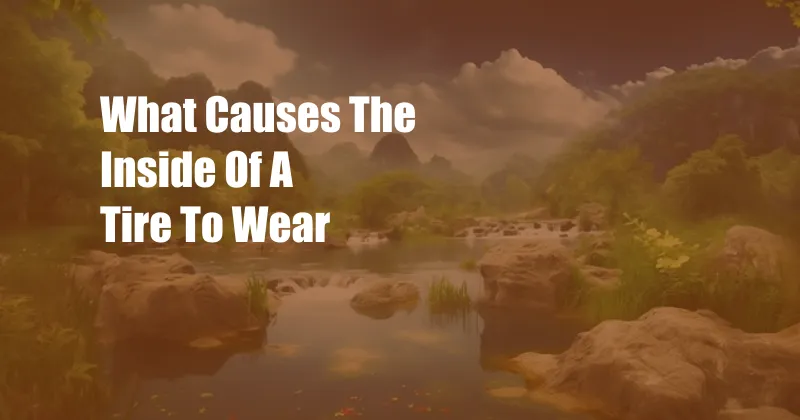
What Lurks Beneath: Unraveling the Enigma Behind Inner Tire Wear
As I cruised down the highway miles from home, an ominous shudder reverberated through my car, accompanied by a persistent humming that grew louder with each rotation of the wheels. I pulled over, heart pounding, to inspect the tires. To my dismay, the once pristine treads were worn unevenly, exposing the inner steel belts.
What had caused this premature deterioration? A nagging question fueled my determination to delve deep into the intricacies of tire wear, exploring the hidden forces that silently erode our trusty companions.
The Anatomy of Inner Tire Wear
Inner tire wear, also known as inner shoulder wear or cupping, refers to the uneven wear pattern that occurs on the inside edge of the tire. Unlike tread wear, which progresses from the outer surface inward, inner tire wear attacks from the inside, gradually compromising the integrity of the tire.
This phenomenon often manifests as a series of scalloped depressions, resembling cupped hands, along the inner shoulder of the tire. If left unchecked, it can lead to reduced traction, increased road noise, and premature tire failure.
Causes of Inner Tire Wear
Several factors contribute to inner tire wear, including:
- Incorrect Tire Pressure: Underinflated tires cause excessive flexing and strain on the inner sidewalls, leading to uneven tread wear.
- Misalignment: When the wheels are not properly aligned, they pull against each other, causing uneven tire wear on the inner or outer edges.
- Worn Suspension Components: Worn shock absorbers, struts, or ball joints can compromise the stability of the vehicle, resulting in abnormal tire wear patterns.
- Aggressive Driving: Hard cornering and braking can put excessive stress on the tires, particularly the inner shoulders.
- Vehicle Weight Distribution: Uneven weight distribution, such as carrying heavy loads or passengers on one side of the vehicle, can cause accelerated wear on that side’s tires.
Expert Tips for Preventing Inner Tire Wear
To combat inner tire wear, follow these expert recommendations:
- Maintain Proper Tire Pressure: Regularly check tire pressure and adjust it to the manufacturer’s specifications.
- Ensure Proper Alignment: Have your vehicle’s alignment checked and adjusted every year or as recommended by your mechanic.
- Replace Worn Suspension Components: Stay ahead of wear and tear by replacing worn suspension parts as needed.
- Avoid Aggressive Driving: Practice smooth and controlled driving habits to minimize stress on the tires.
- Distribute Weight Evenly: Load your vehicle evenly to prevent uneven tire wear.
By implementing these tips, you can significantly reduce the risk of inner tire wear, extending the life of your tires and ensuring a safe and comfortable ride.
FAQ on Inner Tire Wear
- Q: Is inner tire wear common?
- A: Inner tire wear is a widespread problem affecting many vehicles, particularly those used for heavy loads or frequent driving on uneven roads.
- Q: How do I check for inner tire wear?
- A: Inspect the inner edge of the tire for uneven tread wear, scalloped depressions, or exposed metal belts.
- Q: Can I repair inner tire wear?
- A: In most cases, inner tire wear is irreversible. Once the tread is worn down, the only solution is to replace the tire.
- Q: What are the risks of ignoring inner tire wear?
- A: Ignoring inner tire wear can lead to reduced traction, increased road noise, premature tire failure, and compromised safety.
Conclusion
Inner tire wear, though often overlooked, can significantly impact your driving experience and safety. By understanding the causes and taking proactive steps to prevent it, you can maintain optimal tire performance and enjoy a worry-free ride.
Are you curious to learn more about other aspects of tire maintenance? Share your questions in the comments below, and I’ll be happy to explore them in future articles.